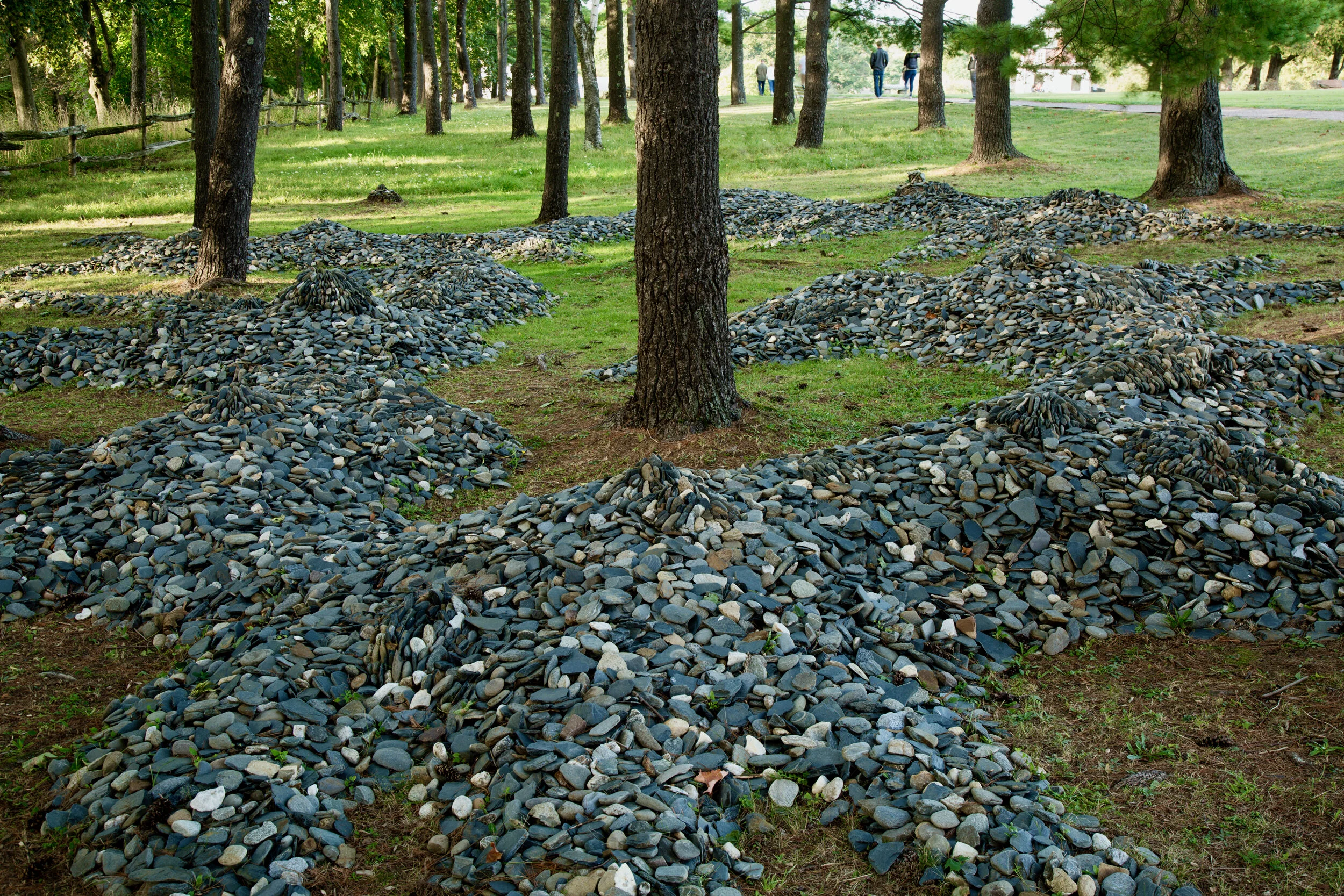Shelburne and Rokeby, along with other regional museums that focus on bygone days, are reaching out to artists for inspiration as they plan for meeting the future interests and needs of museum visitors. Collaborations, such as the two I recently took part in, give me hope that small, locally supported museums, like those that raised my awareness as a kid about the world around me, will continue to thrive. Their welcoming openness to new ideas is commendable.
Read MoreFantasy Topography rose up out of the forest floor last April. It became an object of intrigue for some of the visitors who wandered off the beaten path that circles the museum grounds. The pine tree glade has now returned to its former life as a quiet, shady glen. With all that passes, ours is the choice to hold in memory or let slip away.
Read MoreMovement is critical for getting into the moment, for being of a time and in a place. Perhaps the best thing an artist can offer a viewer is the chance to become a little more aware of themselves. Outdoor art spaces hold the potential for that to happen.
A recent special event at the Shelburne Museum drew a large crowd on a perfect summer evening. I was there to welcome visitors to Fantasy Topography, my temporary, environmental art installation in a pine grove on the grounds. It was great to see lots of people walking around and in the sculpture. Many thanks to those who stopped by to chat, and to the staff for all they do to make an enjoyable time for those attending the museum’s once-a-month, Free Friday.
Read MoreTo be in touch and in tune with nature has a centering effect on us. Couple the outdoors with a creative pursuit, and engagement with both is enriched because together they sharpen and heighten our spatial orientation. My environmental art piece Fantasy Topography seeks to bring pleasure to the core.
Read MoreThe studio has been filling up with rocky toppers this winter. The half-products are elements in a sculpture to be installed as part of a new outdoor exhibition at Shelburne Museum. The uniquely shaped objects will be arranged atop berms of loose stone. The completed piece will sprawl across the floor of a pine forest, flowing between and around the tree trunks.
Read MoreStone Clouds is a tribute to the sustainable agriculture practiced by generations of Mettawee Valley farmers who've picked tons of stones from their fields, all by hand.
Every year, the plow turns up more stones in Ken Leach’s cornfield. It appears they’ve floated up through the rich Mettawee Valley soil from below the surface when in fact they’ve floated down upon the face of the earth from far above.
Read MoreThe shape of a project is pointy at opposite ends and lumpy in the middle. The spark that starts things off may be as quick and simple as seeing a cornstalk-stubbled field sprinkled with the till of a bygone glacier, and thinking, “What would it take to put those stones back up into the sky from whence they fell?” In between that thought and standing under Stone Clouds at Shelburne Museum yesterday was a year-long ride’s worth of lumps and bumps. The unknown is an uneven landscape. Highs are best employed to gain speed for the roll up out of the lows ahead. Uncertainty provides its own propulsion.
Read More“Permanent” is one adjective I associate with my dry stone constructions. When I was asked to make a temporary installation on the grounds of the Shelburne Museum for the upcoming “Eyes on the Land” exhibition, some very different affiliations sprang to mind. And so, as I became acquainted with the Vermont Land Trust properties in the Mettawee Valley that I was partnered with for the show, I sought out examples of land formation and land use that might be described as “short term”.
Read MoreEvery year, the plow turns up more stones in Ken Leach’s cornfield. It appears they’ve floated up through the rich Mettawee Valley soil from below the surface when in fact they’ve floated down upon the face of the earth from far above. There were once great clouds of ice between earth and sky. Ken’s stones were tucked into mile-high blankets of frozen water vapor. They’d been plucked from the even taller mountains that used to reign here, and carried in alluvial fans out across glaciers that were thousands of years in the making and thousands of years in the melting. When the land that is now a Vermont Land Trust protected property said goodbye to its last glacier, twelve thousand years ago, all the sediment and rock that was riding its coattails settled to the ground, creating the dark soil that farmers like for growing corn, plus, an unwelcome bounty of stones.
Read MoreFifty years ago I won a blue ribbon in the Brattleboro Sidewalk Art Show. Thirty years ago I won a National Endowment for the Arts award for designing a local amphitheatre. This week I received a Creation Grant from the Vermont Arts Council. Some might say, the awards in my artistic career have been few and far between. I believe their rarity makes them all the more precious. Being recognized by my beloved green mountain state is especially dear.
Read More








